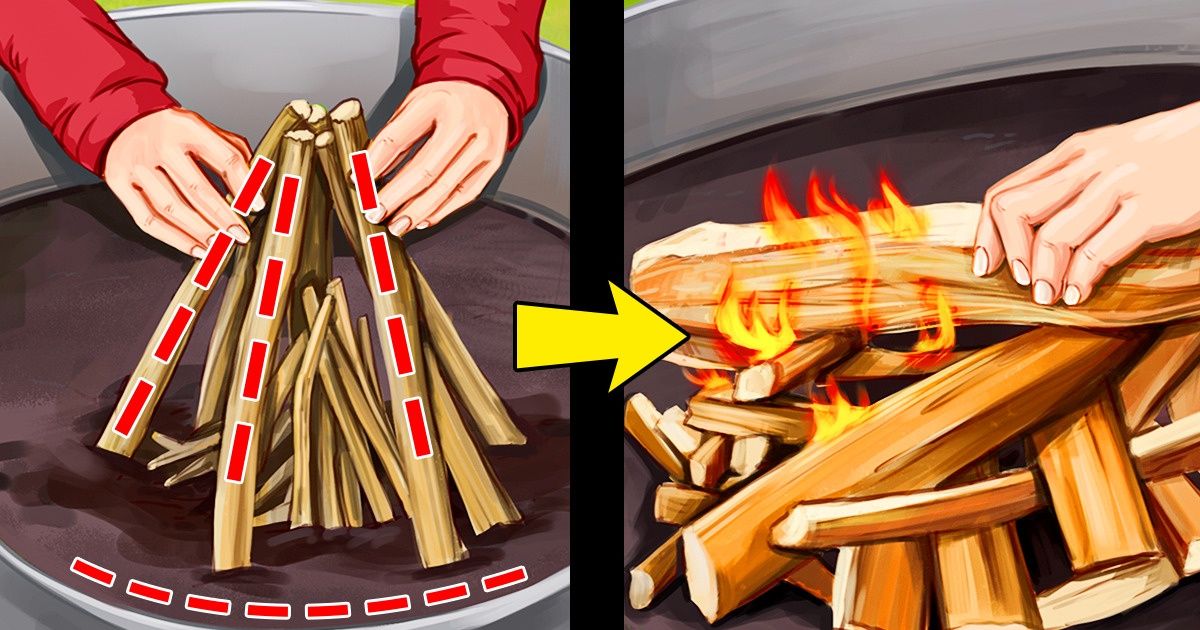
How to Make a Campfire

When making a campfire, you have to be mindful about where you place it, what type of wood you need, and a few other elements. It can be a difficult task for those who are not familiar with what to do.
Because of that, 5-Minute Crafts has put a guide together on how to safely and properly make your own campfire.
1. Find a place for your campfire.
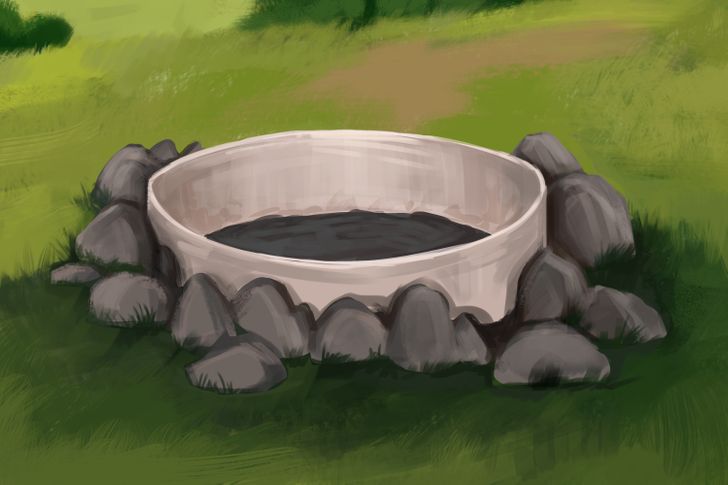
You’ll need an adequate and safe place to start your campfire.
- First, check if there’s a designated area for fires.
- Check if there are existing fire rings you can use.
- If there aren’t any fire rings around, find a place with bare earth to start your fire.
- Make sure there isn’t any grass, even if it’s dead, on the place of your choosing.
- If you don’t find an adequate site with bare earth, make your own by digging and raking the ground.
- Create a dirt platform on the center of the site, and make sure it’s at least 3 or 4 inches thick.
2. Gather some wood.
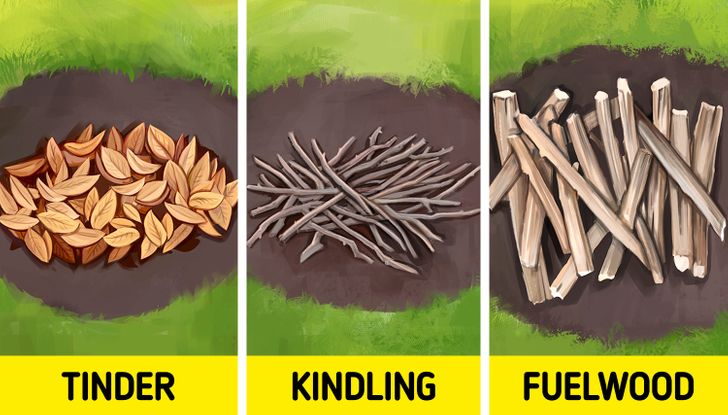
You’ll need 3 different types of wood. Tinder, kindling, and fuelwood.
1. Tinder is used to start the fire, as it is extremely flammable.
- Find small twigs, dry leaves, grass, and needles.
2. Kindling is used to help the flames grow.
- Sticks smaller than 1 inch are usually good for this.
3. Fuelwood is used to keep your fire going.
- Any larger piece of wood will do here. Think of branches about 4 inches wide.
Important: Stack the wood you’re not using yet upwind from your campfire.
3. Start laying the fire.
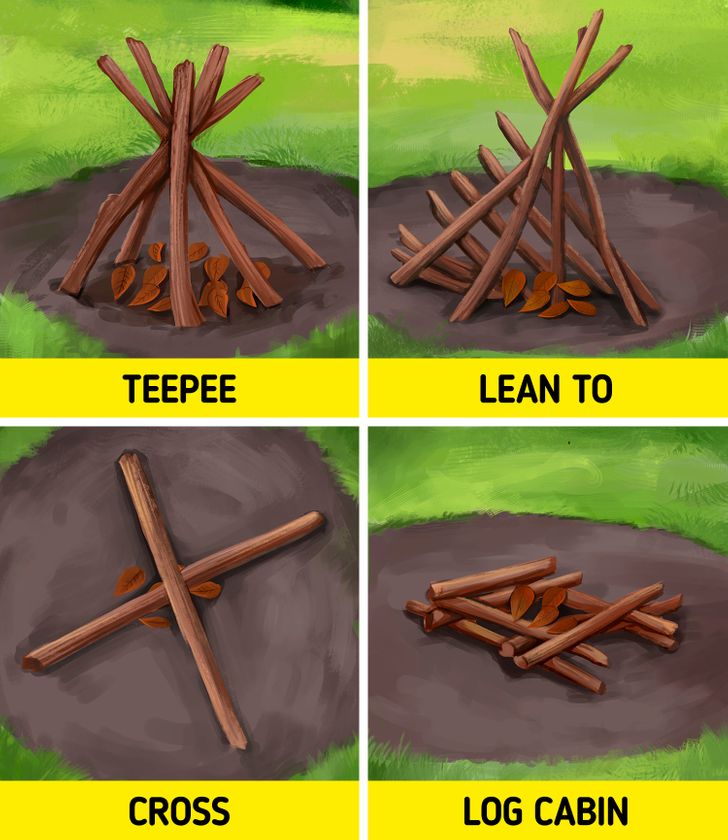
There are 4 ways you can start laying your fire:
- Teepee: Lay the kindling as if you were building a tent.
- Lean to: Here, we also make a tent, but a different kind. Start by sticking pieces of kindling over the tinder, firm onto the ground, at around a 30º angle. Make sure the ends of the sticks are pointing toward the wind.
- Cross: Stack the kindling on top of each other with a crisscross method.
- Log cabin: Make a pile of tinder, then surround it with kindling branches at a right angle. Picture a small box cabin. That’s what you’re going for. Top it off with kindling.
4. Lighting the campfire.
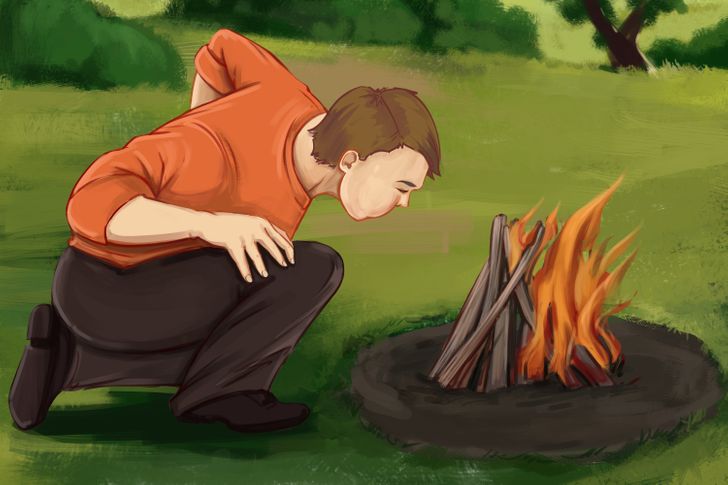
5. Extinguishing the flames.
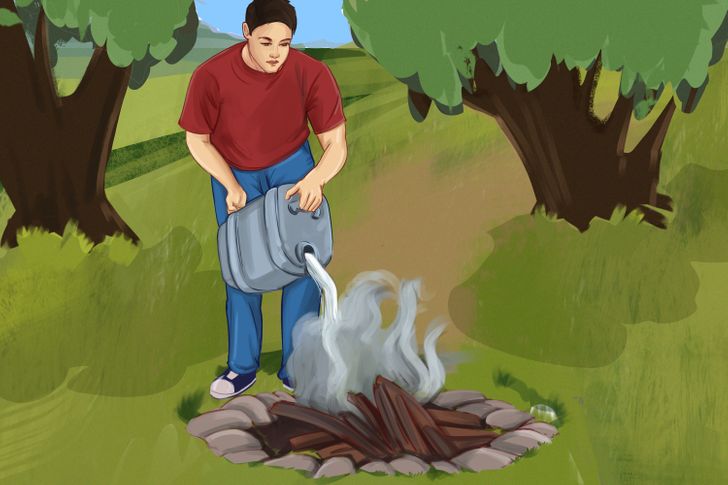
- Let the wood burn completely to ash.
- If you don’t have time to wait for this, pour water on top of the campfire, making sure to extinguish all the burning embers.
- If you don’t have water, throwing dirt or sand on top of the campfire also works.
Share This Article